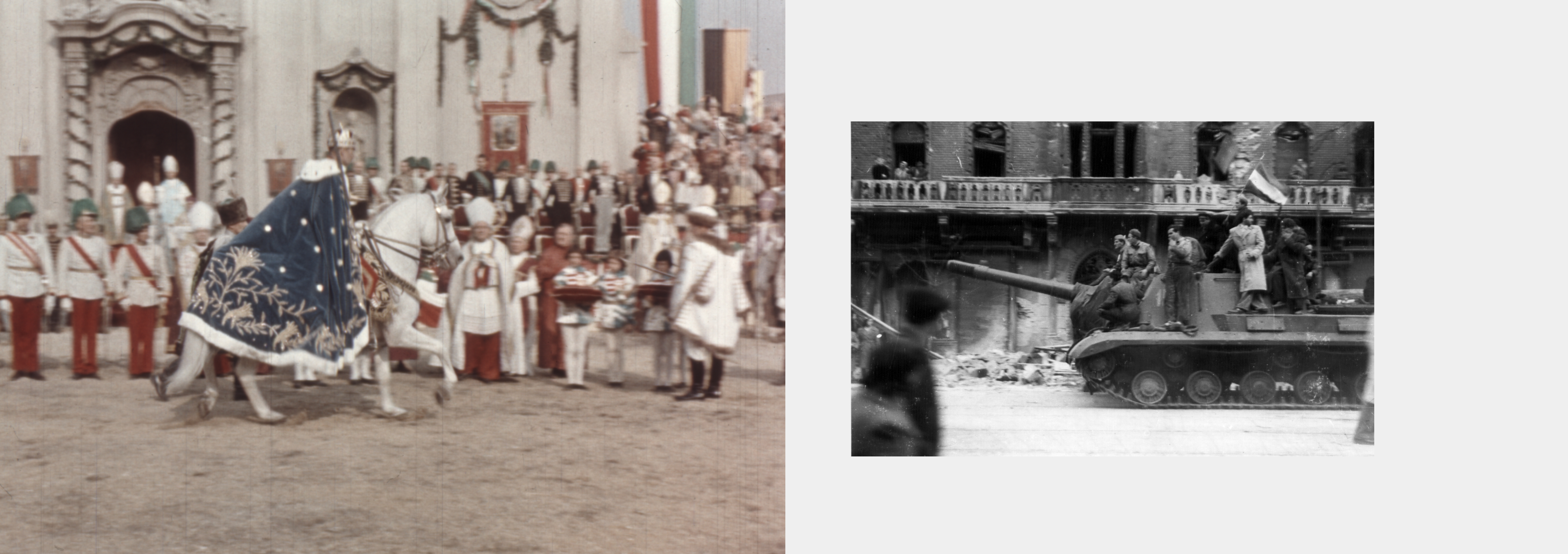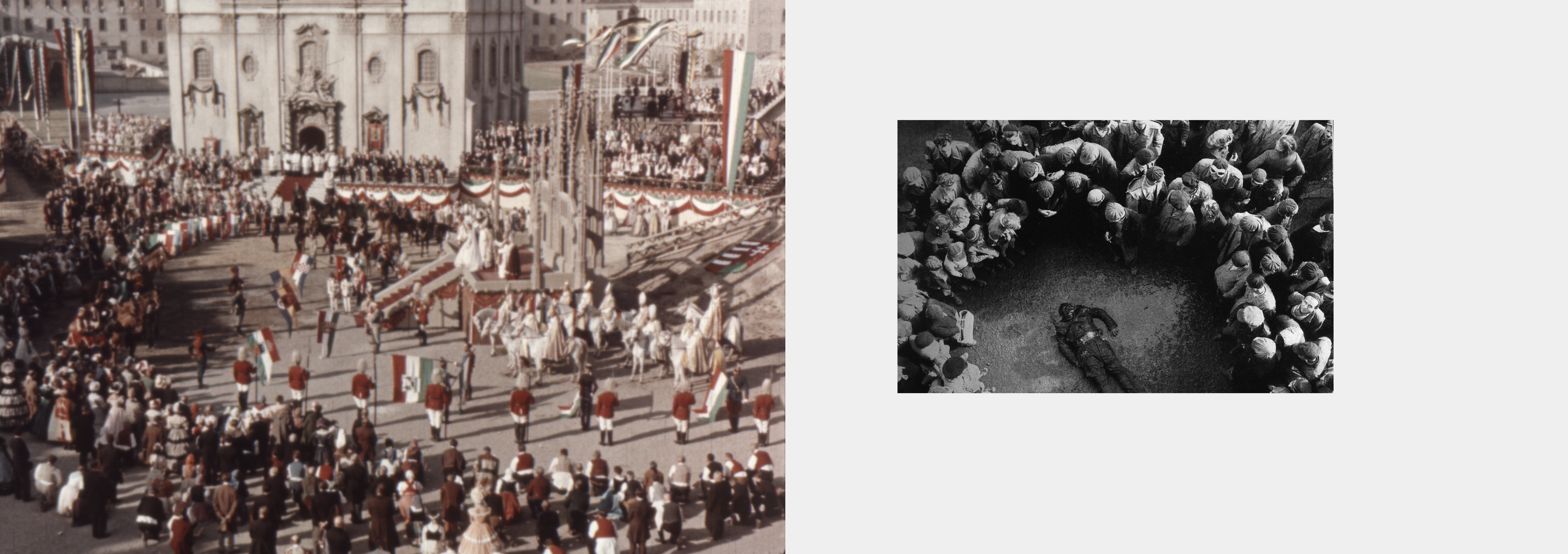NEUNZEHNHUNDERT ÖTVENHAT
(Nineteenhundred fiftysix), 2004
leporello folded book with ten image pairs, pigment print on all rag paper, unfolded 21.5 × 594 cm (with Lilla Khoór)
NEUNZEHNHUNDERT ÖTVENHAT (nineteenhundred fiftysix) is a leporello folded book consisting of ten pairs of pictures. The pictures on the left side are film stills taken from Sissi the Young Empress. The film with Romy Schneider is the second episode of the trilogy by Austrian film maker Ernst Marischka. It was shot and released in 1956. The film plot ends with the glorious arrival of the imperial couple in Budapest where Sisi is crowned queen of Hungary. However, the film was not shot on the ground but exclusively on Austrian locations.
The black and white pictures on the right side were taken in the same year 1956, but this time really in Budapest. They document different scenes from the Hungarian revolution of autumn ’56 (Hungarian: “ötvenhat”). With the occupation of the Hungarian capitol by the Soviet Army, that was met with fierce resistance, the national uprising came to a bloody end.
The juxtaposition of the stills from the Kodak-Color period film – that only feigns it’s scenery – and the documentary images taken around the same time in Budapest also confronts two different ways to depict ‘history’. The pictures are presented as pairs showing formal similarities and equivalences and thus raise questions about the documentary, ‘authentic’ or staged character of images of history.











